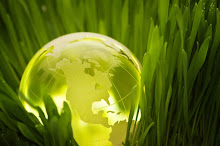Barriers to innovation;
focus innovation culture
What makes innovate culture
- It is important that the group has the ideas and motivation to innovate.
- For problem solving flexibility is important
- Operation and support for purposes of creation or control
- Working together in a group
+ share of responsibilities
- If the group is well motivation, and everyones is enjoying working in groups it stimulates creativity
Need to know how to motivate the group + work dynamics is also important factor
Disagreements can actually generate better solutions
- CREATIVITY + IMPLEMENTATION- have to implement the idea or apply it
-If Implementation process isn't there at the end, then the whole thing has no meaning--} therefore it is a barrier in some sense
Organising for innovation
- it is not enough for the company or organisation just to innovate, there are more factors to consider
- resources is a huge factor to look at
- there is a need of a leader
- clearly direction is a reason why organisation needs do innovate
- there is a need to communicate, energy of a team is important
- think through
- self-development
one needs to be interested in doing something inspiration is a drive
- HR theory is useful
- Other resources to enable innovation to happen
- cross boundary work( collaboration )-is the key
- Appropriate structures- make sure all the things fit together
- Learning requires creating mistakes
if the company doesn't appreciate mistakes, the work is not going to go further
Building an innovation culture
- the notion of routines is important because it can enable and support the development of innovation culture
- 3 levels - individual, group work and organisational level
All of these term can be applied to sustainability
Managing an innovation culture
- is difficult!
How to measure?
· Fostering creative climate
· Structural arrangements
· Process-based approach
- barrier will by by just thinking about the outcomes
‘total quality management is a journey not a destination’
Bessant, 2003
it is about the process rather than outcome
Strategy: Where we are?
Where we want to be?
How do we get there?
how far and how fast
Learning from others- sharing problem solving
Hugely important for both cases
High-involvement vs. focused development of innovation culture
Organisational archetypes: organic and mechanistic
- mechanistic is concerned with maintaining the status quo and managing the operations that keep the organisations going
- organic is concerned with creating the future products and processes
· High-involvement innovation does not focus on occasional radical innovation breakthroughs but concerns itself with creating culture in which innovation is a way of life
· Focused development of innovation means creating innovation culture amongst a relatively small but influential group within the organisation
! Value of innovation culture- the value that works for people
-need to know how to get the balance right
 I would like to take this opportunity to say Thank You to everyone from my class and especially to Noemi and Alyas for their support, encouragement, contribution and understanding throughout the entire course. I very much enjoyed working with all of you and thank you again for providing me with the knowledge I gained from each and every lecture. As you may know this is my last semester, and may be I sound very emotional but I want to say that I am going to miss Regents, Teacher, Friends and all the People I know from our university who made my studying period very interesting and exciting. I will try to do my best and meet your expectations.
I would like to take this opportunity to say Thank You to everyone from my class and especially to Noemi and Alyas for their support, encouragement, contribution and understanding throughout the entire course. I very much enjoyed working with all of you and thank you again for providing me with the knowledge I gained from each and every lecture. As you may know this is my last semester, and may be I sound very emotional but I want to say that I am going to miss Regents, Teacher, Friends and all the People I know from our university who made my studying period very interesting and exciting. I will try to do my best and meet your expectations.













.jpg)




















